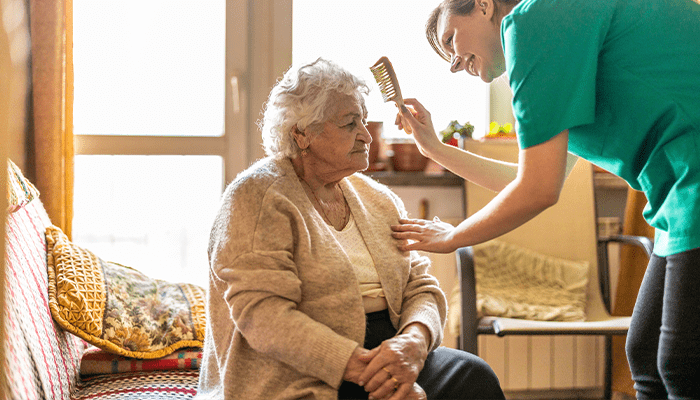
Building a Compliant and Effective Emergency Preparedness Plan for Senior Living
If you’ve ever managed through a power outage, staff shortage, or even a flu outbreak, you know that “emergency preparedness” in senior living is about keeping residents safe and operations stable no matter what comes your way.
CMS Is Watching Closely
The Centers for Medicare & Medicaid Services (CMS) introduced emergency preparedness regulations nearly a decade ago, but until recently, enforcement was limited. A recent federal review found that while most nursing homes and assisted living communities have plans, many haven’t updated them regularly or tested them thoroughly.
That’s changing. CMS has announced plans to strengthen its guidance by mid-2026, meaning surveyors will have clearer criteria and higher expectations for your plans, training, and documentation.
Four Core Elements of CMS Emergency Preparedness
CMS evaluates each community on four core elements of emergency preparedness:
1. Risk Assessment and Planning
Every facility must conduct a hazard vulnerability assessment (HVA) specific to its location, structure, and resident population. Include risks such as natural disasters, cyber incidents, infectious diseases, and utility failures
2. Policies and Procedures
Written policies should clearly outline how your team will respond to each likely scenario, including severe weather, resident elopement, and staffing shortages. CMS expects annual reviews with proof of updates.
3. Communication Plan
Maintain accurate contact lists for staff, vendors, emergency responders, and resident families. Verify and update this information each year, and keep a written copy accessible during any outage.
4. Training and Testing
CMS requires at least two emergency exercises per year. One must be a community-based or full-scale drill, and the second can be a tabletop exercise. Each exercise must have an after-action report detailing what worked, what did not, and how the plan was improved.
Common Gaps Surveyors Find
Many communities believe their plans are compliant until survey time reveals issues. The most common deficiencies include:
- Outdated plans with no evidence of annual updates
- Missing infectious disease protocols or outdated pandemic procedures
- Incomplete training records for new hires and current staff
- Inaccurate contact lists for vendors, local emergency agencies, and staff leaders
Want to go deeper? Watch our webinar, CMS Expectations for Skilled Nursing Facility Emergency Preparedness.
Strengthening Your Senior Living Emergency Preparedness Plan
A compliant, effective plan starts with structure, documentation, and consistent review. Here are practical steps to improve your preparedness and stay CMS-ready:
- Update your HVA regularly. There are tools available to help you identify your top ten facility risks. Align policies and drills to those risks.
- Involve every department head. Each leader should know their role in an emergency and be able to train their teams.
- Keep detailed records. Document updates, attendance at trainings, vendor agreements, and exercise reports.
- Build local partnerships. Collaborate with your county emergency management agency, regional healthcare coalitions, and nearby facilities. These relationships improve response time when a real event occurs.
- Review backup systems and supplies. Surveyors will check your ability to maintain HVAC, food, water, medications, and essential services during a power loss or evacuation.
Beyond Compliance to Prepare for the Future
Yes, CMS surveys are a motivator. But the real goal is continuity of care. A current and well-tested plan builds trust with residents, families, and your team. It protects your reputation and ensures the highest standard of care, even in the most difficult circumstances.
At AssuredPartners, our senior living insurance specialists help skilled nursing and assisted living communities strengthen their emergency preparedness programs. From policy reviews to risk assessments and training guidance, we help you stay prepared, compliant, and confident when it matters most.
Disclaimer:
The information contained herein is offered as insurance industry guidance and provided as an overview of current market risks and available coverages and is intended for discussion purposes only. This publication is not intended to offer financial, tax, legal or client-specific insurance or risk management advice. General insurance descriptions contained herein do not include complete insurance policy definitions, terms, and/or conditions, and should not be relied on for coverage interpretation. Actual insurance policies must always be consulted for full coverage details and analysis.
Looking for more insights? Contact our Healthcare team today.
Related articles

Join Us for a Live Webinar Event Thursday, December 18, 2025 | 3:00 - 4:00 PM EDT Details This session will explore the causes and clinical presentation of agitation in residents with dementia,...

The next five years will be critical for senior living and nursing home providers. Shifts in health system consolidation, CMS programs, and hospital partnerships are already reshaping how skilled...

Watch the Webinar Replay In this webinar, we’ll explore the structural changes that are adversely impacting nursing home skilled care revenues. This session will briefly touch on the impact of ACO...